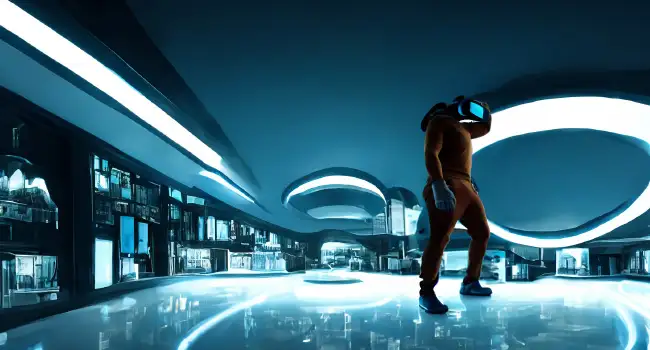Virtual Museum

In a world increasingly dominated by digital experiences, it's no surprise that museums are embracing the virtual realm. Virtual museums offer a unique and accessible way to explore art, history, and culture, breaking down geographical and physical barriers to bring the wonders of museums to anyone with an internet connection.
Virtual museums are online platforms that replicate the experience of visiting a physical museum. They may use a variety of technologies, such as: 360-degree virtual tours, high-resolution images and videos, curated online collections, and interactive games, quizzes, activities to learn more about the exhibits.
Virtual museums offer a number of advantages over traditional museums. Accessibility - anyone with an internet connection can visit a virtual museum, regardless of their location or physical abilities. Affordability - virtual museums are often free or much cheaper to visit than physical museums. Convenience - you can visit a virtual museum anytime, anywhere, and for as long as you want. Engagement - virtual museums can be more interactive and engaging than traditional museums, thanks to the use of technology. Preservation - virtual museums can help to preserve artifacts and artworks for future generations.
Virtual museums are still in their early stages of development, but they have the potential to revolutionize the way we experience art, history, and culture. As technology continues to evolve, we can expect to see even more immersive and interactive virtual museum experiences in the future.
Virtual Museum and Travel Resources
Acropolis Museum - findings of the archaeological site of the Acropolis of Athens, Greece
American Association for Respiratory Care - Virtual Journey Through Time
American Southwest Virtual Museum - digital repository of photographs, maps, information and virtual tours
Art Institute of Chicago - collection of art from around the world
Bass Museum of Art - Miami Beach’s contemporary art museum
Ben Uri Collection - collection of works by late 19th, 20th and 21st Century immigrant artists
British Museum - Collection online allows access to almost four and a half million objects
Canadian Museum of History - Reflections on the future, today
Canton Museum of Art - Virtual Gallery
Exploratorium - Institute of Museum and Library Services
Giraffatitan (dinosaur) comes back to life - Youtube 360 video (4:04) from the Museum für Naturkunde in Berlin
-
Google Arts & Culture - Many museums around the world are available here in Google Street View.
Guggenheim - Collection Online
Institute of Navigation Museum - Online history of navigation related items
Lake Meade - Virtual museum
Louvre - Enjoy the Louvre from home
Metropolitan Museum of Art - The Collection
Museum of Computer Art - MOCA Virtual Museum
Museum of disABILITY History - Historical exhibits online
Museum of Science and Industry, Chicago - Online Science
Museum of Science, Boston - Online Exhibits
Museum of the History of Science - University of Oxford
Museo Galileo - Institute and Museum of the History of Science, Florence
NASA Glenn Virtual Tours - an inside look at NASA Glenn Research Center’s facilities
National Archives - Online Exhibits
National Gallery of Art - Browse the collection
National Gallery of Victoria, Australia - virtual tours of contemporary art, historic exhibitions, fashion and design, architecture, sound and dance.
National Museum of Asian Art - cultural exchange where the arts of Asia and the United States speak to one another and to the public
National Museum of China - history and art in China in 360 virtual tours
National Museum of Computing - history and ongoing development of computing
National Museum of Modern and Contemporary Art, Korea - digital museum
National Women's History Museum - online exhibits
National WW1 Museum - online exhibitions
Orsay Museum - French art dating from 1848 to 1914
Prado Museum - the main Spanish national art museum in Madrid
Princeton University Art Museum - online exhibitions
Rijks Museum - the national museum of the Netherlands
San Diego History Center - stories of our region – past, present, and future
Smithsonian - Time and Navigation online exhibition
Smithsonian - How Things Fly
Smithsonian - Exhibitions Online
Smithsonian National Museum of American History - Exhibitions Online
State Hermitage Museum - a museum of art and culture in Saint Petersburg, Russia
Trans-Mississippi Theater - Virtual Museum with pictures and description
Uffizi Galleries - collections of art, precious artisan-made objects, books, and plants belonging to the Medici, Habsburg-Lorraine and Savoy families.
Vatican Museums - Museums open to all
Vilcek Foundation - immigrant contributions in the United States
Virtual Museum of Minerals and Molecules - University of Wisconsin
Virtual Yosemite - virtualyosemite.org
WebExhibits - An interactive museum
World Virtual Museum - Artists and collectors display their works of art
-
Video Museum Tours
Paris 360 Experience - Youtube
A London City Guided Tour (360 VR Video) - Youtube
Natural History Museum Dinosaur Exhibit Walking Tour in 4K - Youtube

